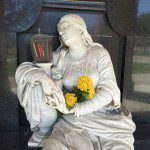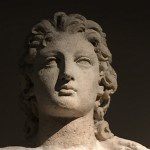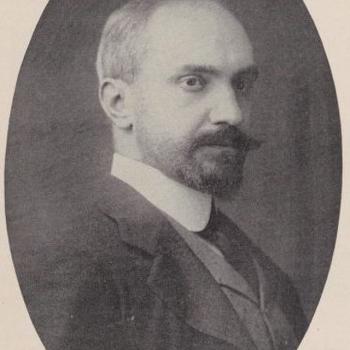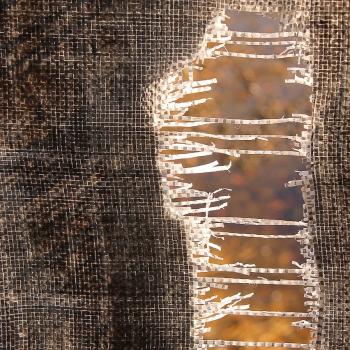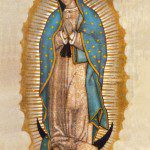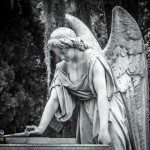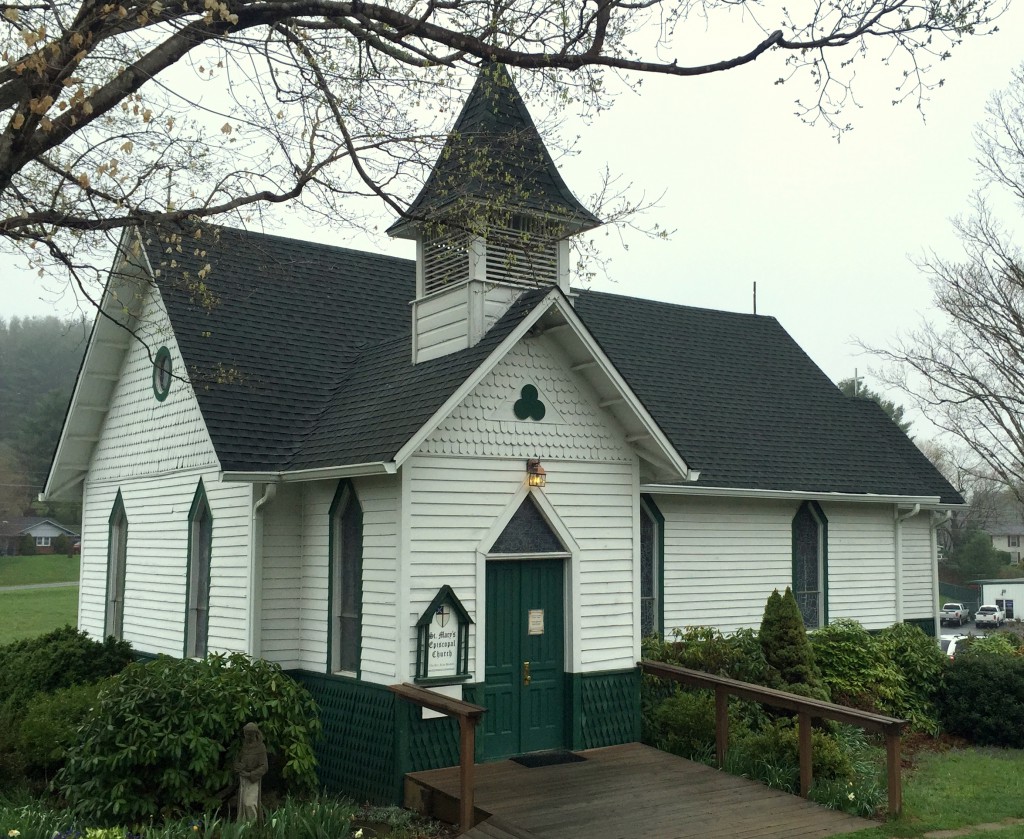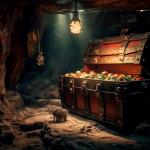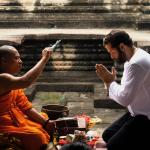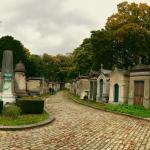If you’ve been fortunate enough to visit Europe, you probably know what happens after you tour enough churches: they blend together. They’re all spectacular, they all have complicated histories, and they all combine into one blurry memory once you try to recall them after you return home.
We know we should have taken the time to truly savor each one, learning about its architecture and history, attending a service, and meeting its members. But we didn’t, because we’re on holiday and there are four more churches listed in the guidebook and if we hurry we might be able to fit in one or maybe two more before dinner.
Something like this happened to me in Vienna, where visiting churches is like eating chocolates–just one more and then I’ll stop, I promise.
But in the end, less is usually more, so today I want to tell you about just two churches: one because it was so beautiful, and the other because it seemed to speak directly to me.
And I’m going to show you some pretty pictures, too, because words alone can’t begin to do them justice.
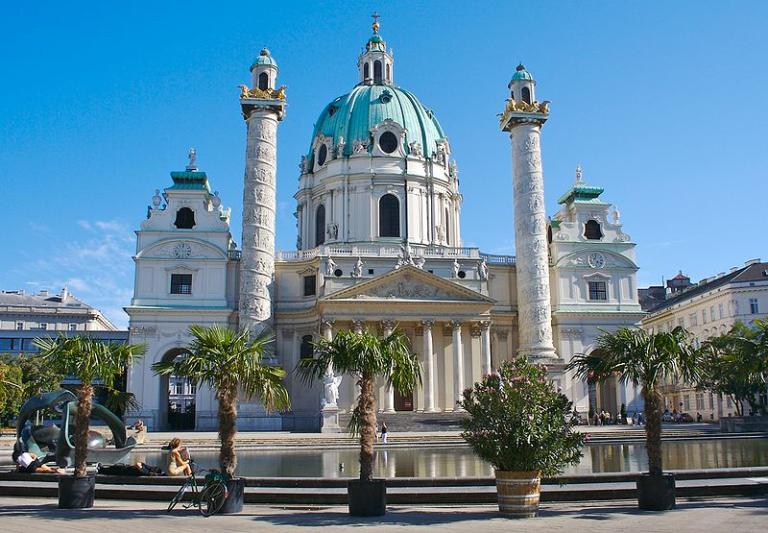
The first is the Karlskirche, or Charles’ Church. Charles VI, the Holy Roman Emperor, pledged to build this church in 1713 after the ending of a plague epidemic in Vienna. He named the structure after St. Charles Borromeo, a saint who watched over plague victims. Constructed between 1716 and 1737, it’s one of the city’s landmark buildings, an exemplar of Baroque architecture.
It has some unusual elements for a Baroque church, however, as you can see in the picture above. Its portico resembles a Greco-Roman temple, for example, and its two tall columns are modeled after ones built in Rome to honor the Emperor Trajan (for some inexplicable reason they’re topped by Asian-style pagodas). The architects of Karlskirche were not fans of minimalism.
To be honest, I’m not a huge fan of Baroque architecture. Those of us who like to hang around churches all have our favorite styles–Gothic, Romanesque, or Byzantine, perhaps, or even those Scandinavian churches that look like Viking long boats. I’d always considered Baroque in my second tier of church styles.
But after touring Karlskirche, I’m reconsidering. After being in that luminous sanctuary, I can see why the interior of this church has been called one of the greatest religious spaces in the world. It’s gloriously over-the-top, filled with marble and gold, with sunlight streaming in from windows in its dome. I kept expecting to see angels fluttering around inside like pigeons trying to find their way out of garage they’ve flown into.
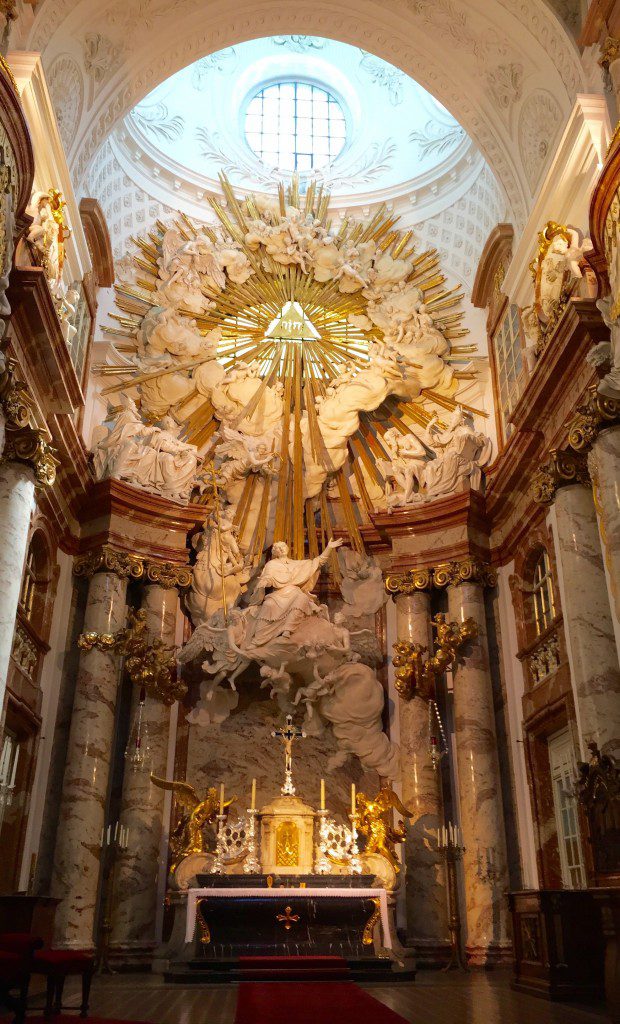
If the goal of Baroque architecture is to dazzle, then in Karlskirche the mission is accomplished.
I also had a laugh-out-loud moment in Karlskirche that drew glances from my fellow tourists. We had taken a little elevator to the top of the church, the better to see the frescoes that adorn the interior of its dome. In the midst of all the usual angels, cherubs, saints, apostles, and members of the Holy Family was this image:
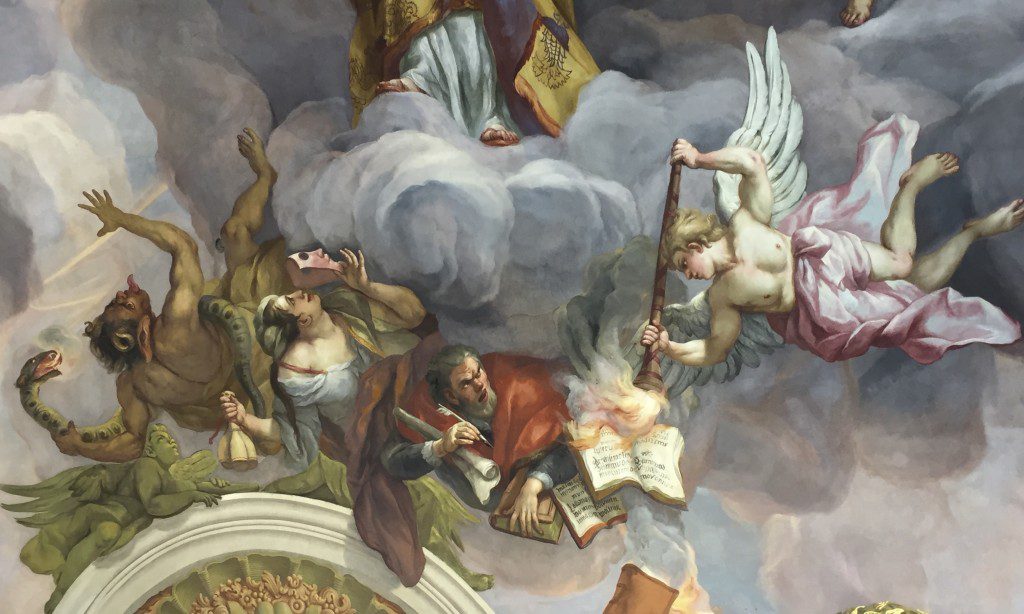
There’s Martin Luther, founder of my home denomination of the Lutherans, being banished from heaven. An avenging angel is setting his books on fire and there’s a nasty looking demon being sent to Hell as well (pretty clearly he and Martin are best friends). I’m not sure who the woman with the mask is, but she’s certainly up to no good. Don’t you just love it when church politics get immortalized in high art? I know it’s mean-spirited, but it’s also quite funny.
OK, here’s another fresco, just to show you an example of the non-snarky pictures there. There were a lot of happy angels in this church.
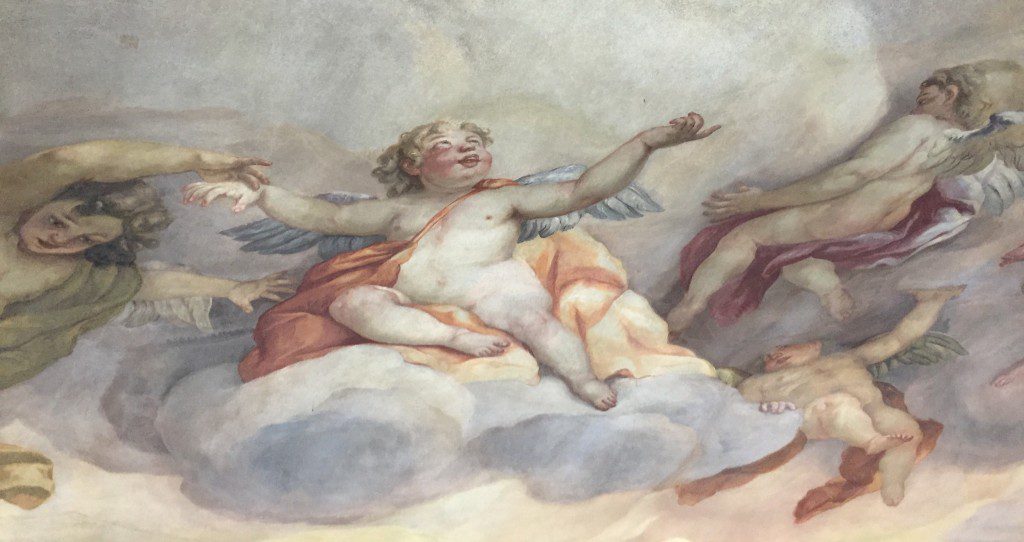
But of all the churches we visited in Vienna, my favorite was the Griechische Kirche, also known as the Holy Trinity Greek Orthodox Church. Built in the 19th century in a Byzantine Revival design, its sanctuary is small and intimate. Glorious icons fill almost every inch of its walls.
Part of what I loved about this church is that it isn’t heavily visited, so we had it to ourselves except for a caretaker who sat near the door. She welcomed us warmly and said that we were welcome to stay as long as we wanted. I sat for a long time in that church, gazing up at the icons all around, mesmerized by their beauty.
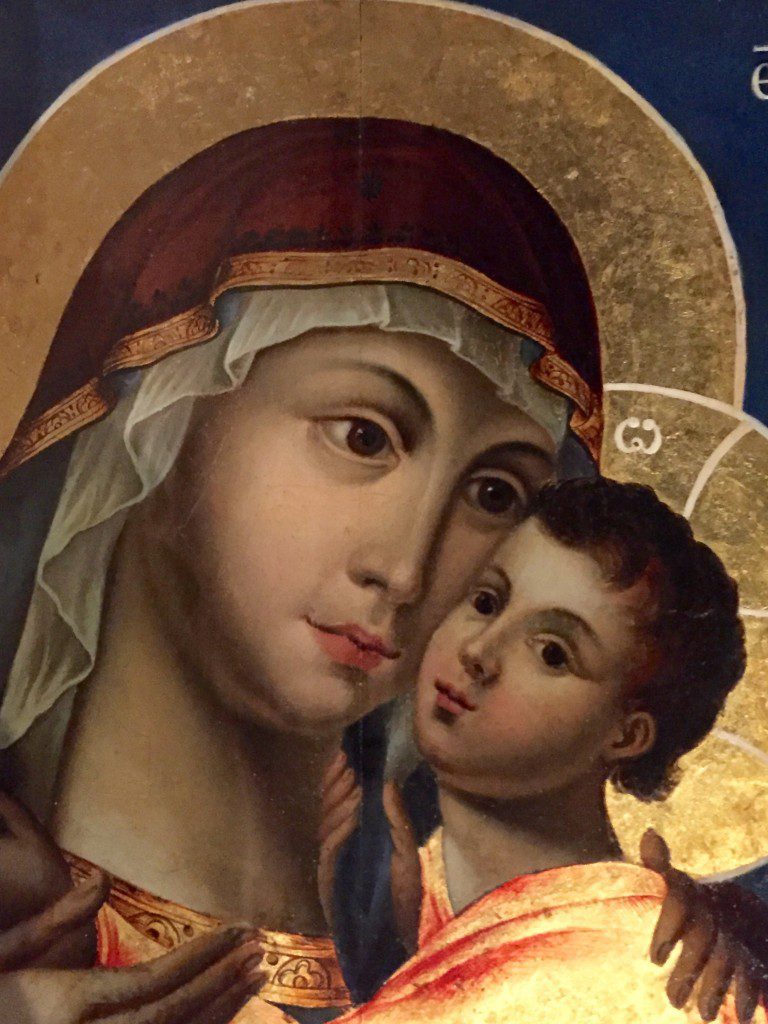
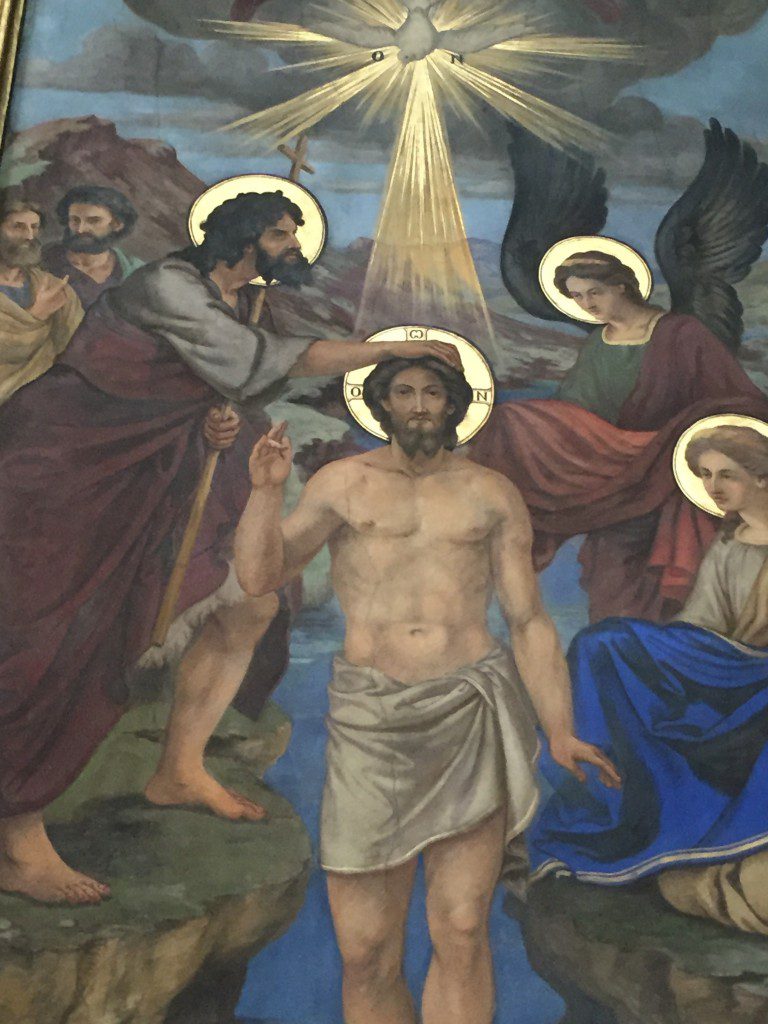
I know I should tell you more about the church’s history, and who attends there, and the story of the artists who created the icons. But by that time in our Vienna tour I was a little burned out on taking notes and collecting brochures. Sometimes the best way to do research is simply to sit. So that’s what I did in that church.
As I did so, I realized once again that most places aren’t holy because of their history, or their political or theological stances, or even the beauty of their art. Instead they are sacred because they speak to us through some mysterious language of the spirit, one that we learn not through study, but through osmosis.
The Holy Trinity Church was a good place to sit in silence. And isn’t that perhaps the most valuable thing holy places offer us?
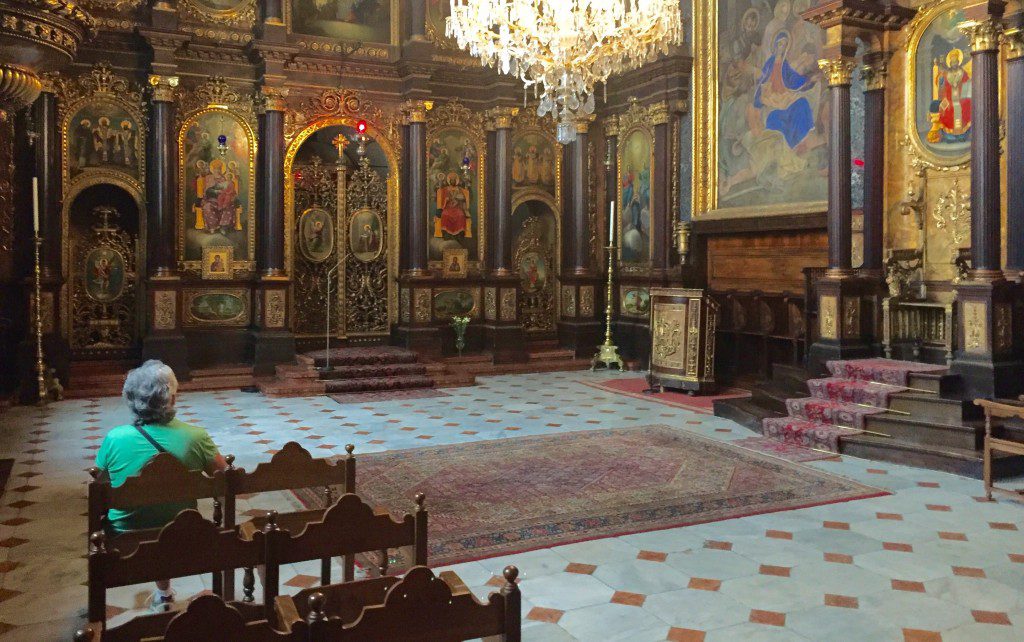
Stay in touch! Like Holy Rover on Facebook:

